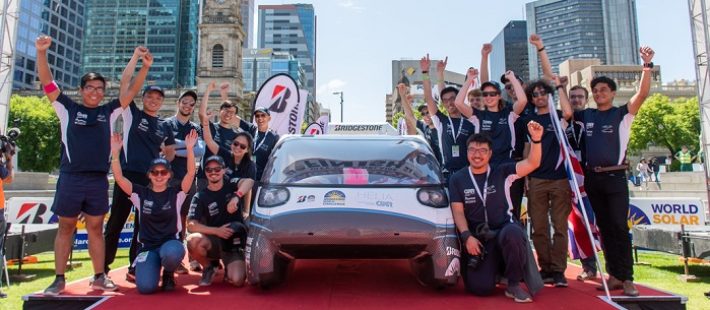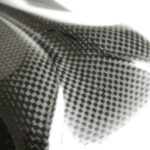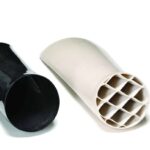Cambridge University Eco Racing (CUER) has just returned from its first international race with Helia – a 1,864-mile drive from Darwin to Adelaide as part of the Bridgestone World Solar Challenge. The vehicle pushes the boundaries of automotive battery technology, efficient tyres and aerodynamics, weighing only 550kg due to a specialist ultra-lightweight carbon-fibre chassis and body panels tooled by Portsmouth based Formaplex, a leading lightweight manufacturer for some of the world’s biggest Formula 1 teams and automotive companies producing multi million pound high-powered supercars.
Weight reduction
Use of composites allowed the team to drastically reduce weight while maintaining structural integrity, allowing Helia to travel further and faster than would be possible with other materials. Helia’s streamlined aerodynamic design and lightweight construction enhance the overall energy efficiency, using power from high performance lithium-ion battery packs produced in collaboration with Silverstone-based Danecca. The battery pack has much higher energy density than most production vehicles, which gives Helia more than double the range of a Tesla Model 3, while being a quarter of the size. Bridgestone, the world’s largest tyre and rubber company, also worked with the team to develop low rolling-resistance tyres.
Versatility and desirability
Unfortunately, some early electrical issues prevented the team from progressing beyond the first stage of the gruelling race, but the only British team in its category was placed third out of 13 by the judges in the practicality category, where Helia was marked against criteria including design, versatility and desirability.
Only arriving back in the UK in the last week, they are now looking ahead to other potential solar races in Europe and beyond, while considering some potential modifications to their vehicle.
“While the Bridgestone World Solar Challenge didn’t go exactly as we had hoped, it is still a tremendous achievement when you look back at the progress, we have made over two years. The conditions this year were particularly challenging, and this is the first time this model had competed. Nevertheless, Helia’s performance numbers showed her to be very competitive; it bodes extremely well for future events,” said Xiaofan Zhang, CUER’s Programme Director. “Working with teams from Formaplex, Bridgestone and Danecca was a real step-change for CUER in the overall research, design and manufacture process. It’s allowed us to share expertise and improve the efficiency of the overall vehicle. Many of our partners are world leaders in automotive engineering, R&D and high value manufacturing but are not necessarily household names. The UK has an abundance of this expertise and we have been very fortunate to leverage their capabilities in Helia.”
Special mould
“We knew the team’s biggest focus had to be reducing the weight of their vehicle in order to increase its overall range,” commented Matt Sellens, Sales Director at Formaplex. “Using our experience developed over almost 20 years of working with cutting edge motorsport teams and supercar manufacturers, we fed into their design process and created the mould tooling, a special mould to produce a highly durable but ultra-light carbon fibre weight chassis.”
“Our engineers designed, machined and sealed the moulds, then worked with the student team to laminate layers of carbon fibre in the moulds to create the chassis and body panels. The assemblies were then autoclave cured. The resulting product is fantastic and a real showcase of our lightweighting capabilities in manufacturing and tooling.”
Source: Inside Composites and www.cuer.co.uk












